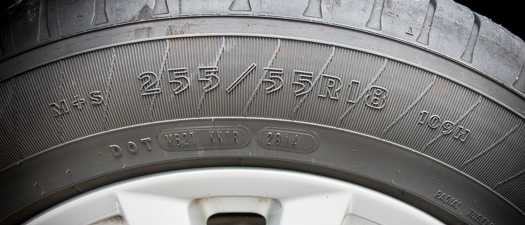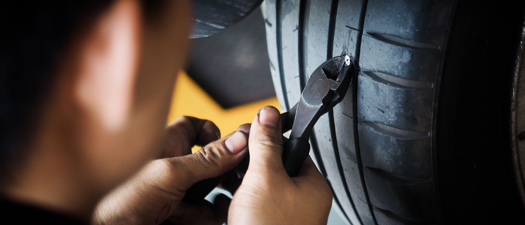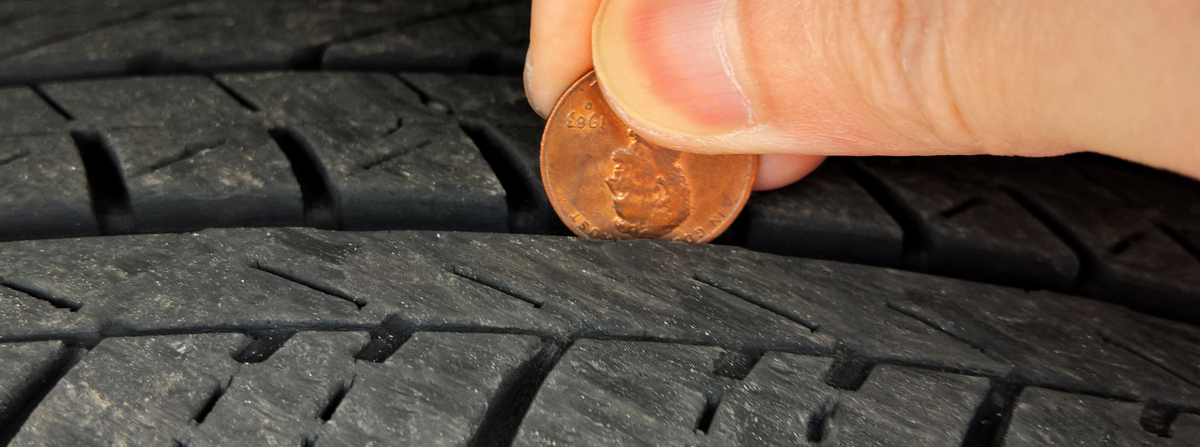
Oct 18, 2021
How to Buy Tires: A Step-by-Step Guide
Roll in to your next tire purchase with confidence! If you’re new to buying tires or if you’re looking to branch out and buy another brand or tire model than what’s on your car, truck, or SUV now, we have 4 easy steps for you to take before heading to the tire shop or looking online.
To jump ahead, click on any of the links below.
Determine if Your Current Tires Need Replacing
1. Determine if Your Current Tires Need Replacing
To find out if you need new tires, visually examine your tires at home. Here's what to look for:
- Uneven or Irregular Tire Tread Wear
- Low Tire Tread Depth
- If your tread depth is lower than 4/32", you should begin to consider buying new tires.
- If you tread depth is lower than 2/32", the USTMA considers these tires as having reached then end of their useful life and should be replaced right away.
- Take the Penny Test! All you need is a penny to easily check your tire tread depth at home.
- Tire Damage
- Cracked rubber on the tire sidewalls or visible, unrepairable punctures.
- Age of Tire
- Although tires don't have expiration dates, the normal service life of a tire in New England is 3-5 years. On the sidewall of every tire is a date showing its production date. After checking the production date, you'll be able to easily monitor the life of your tires.
You will also want to ask yourself, how are your current tires driving? Do they feel like you're losing traction on wet, snowy, or dry roads? If you're starting to lose traction on the roads, you should consider purchasing new tires.
2. What Type of Driver Are You?
Depending on what kind of driver you are will determine the type of tire that's best for you and your vehicle. What type of driver are you?
- Long Distance Driver
- You may want to consider a tire with a higher mileage warranty.
- Backroads vs. Highway Driver
- Consider the fuel efficiency ratings and mileage warranties.
- Off-Road Driver
- An all-terrain tire may be the best option for you.
You may also want to consider the weather conditions you're driving in the most. If you're driving in the snow the majority of the year, you may want to invest in a set of winter tires vs. all-season tires.
3. What Are Your Top Priorities?
A lot of people only focus on the price of a tire, but should also consider the features of a tire. Before heading out to buy your next set of tires, be sure to rank all of the following items from most important to least important. This will help narrow down your search and determine which tire is best for you and your budget.
- Traction Rating
- Tread Wear
- Noise Rating
- Handling/Ride Comfort Rating
- Fuel Efficiency Rating
- All-Terrain Rating
- Mileage Warranty
- Manufacturer (i.e. Goodyear, Michelin, Continental)
- Seasonality (i.e. Summer vs. Winter vs. All-Season)
4. Find Your Vehicle's Tire Size
Each vehicle has a unique tire size that's specifically engineered and sized for its make and model. Factors such as vehicle weight, suspension, and rim size are all taken into consideration. The tire size and loading information can be found on a label inside the driver's side door jam.
Still not sure what to do? Talk to the tire experts at Sullivan Tire and Auto Service to help guide you through the tire buying process, and to discuss tire options that are best for you and your vehicle.
- Give us a call! 877-592-8473
- Live Chat with us on our website
- Submit a Contact Us form online for email communication
- Research tires for yourself online at sullivantire.com/find-tires. All you need to do is input your vehicle make, model, year, and option or the tire size, if you know it.
Additional Tags
Find Tires
Easily find tires for your vehicle and get pricing on our website. To search, all you need is either your desired tire size or your vehicle information.
Find TiresRelated Articles










